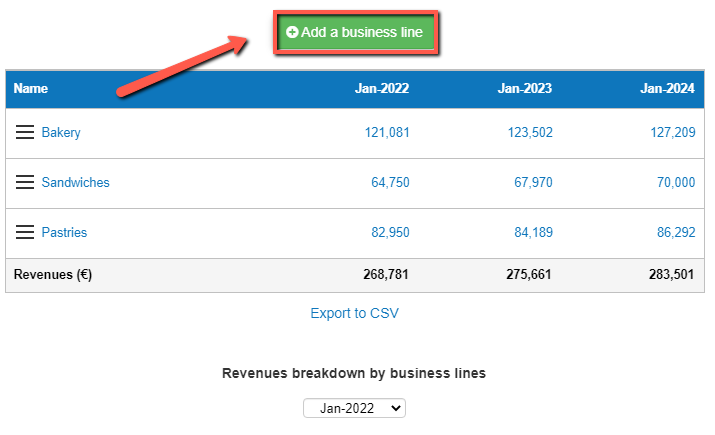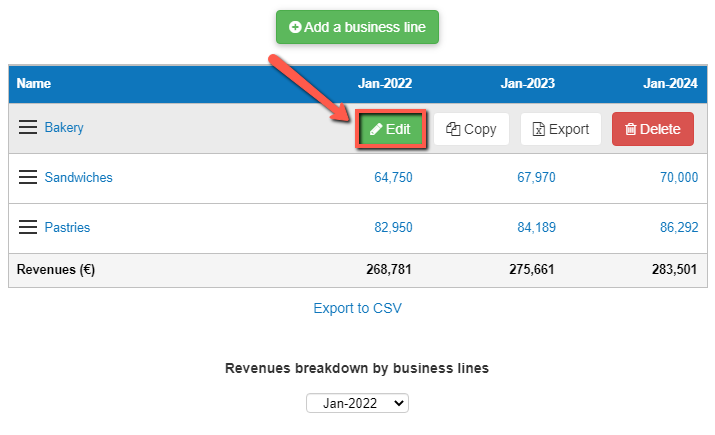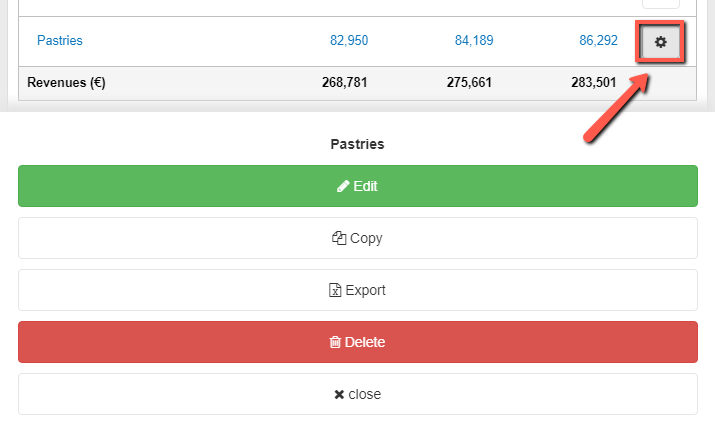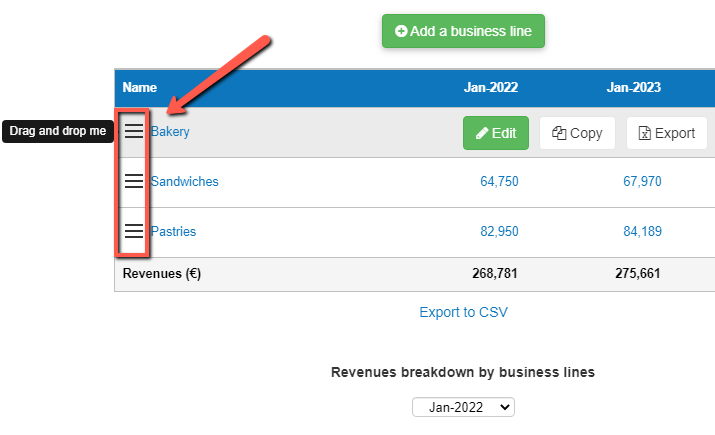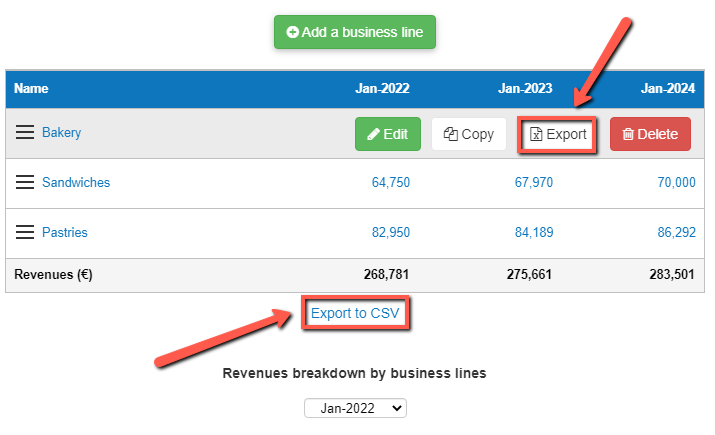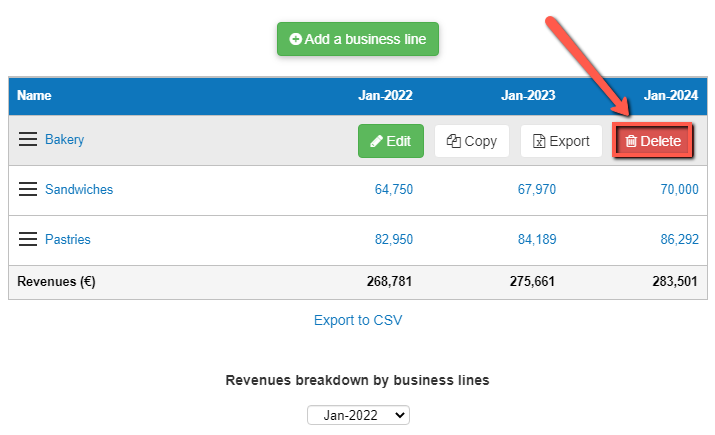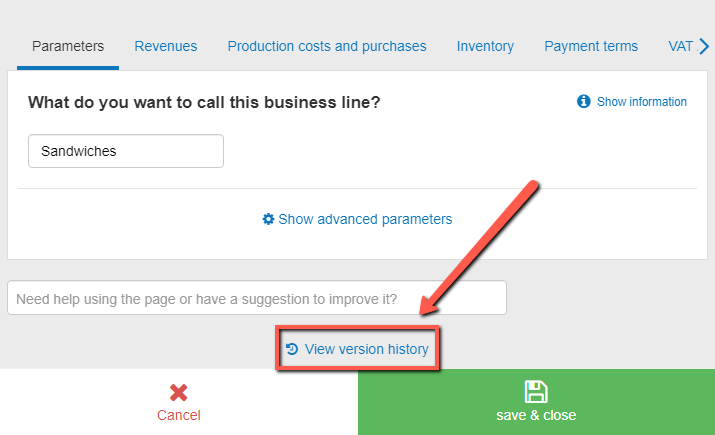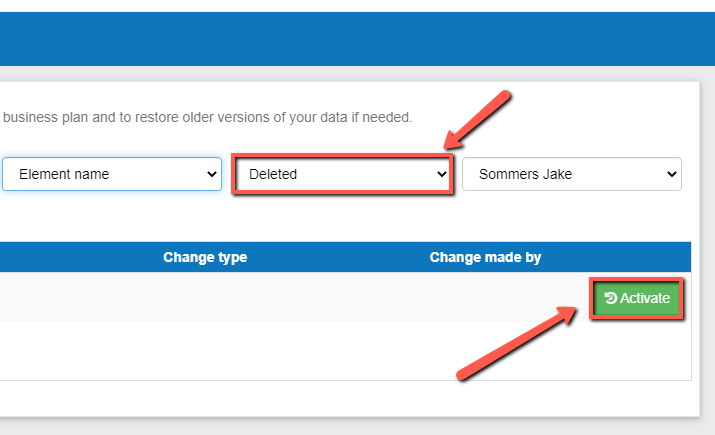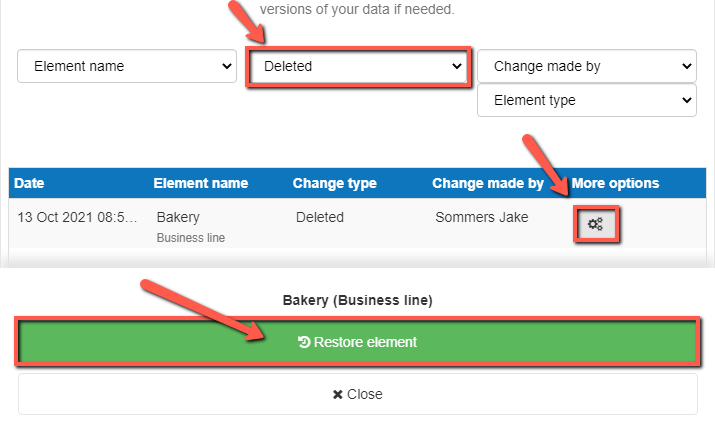How to use the manage operating items module
This article explains how you can use the other operating items module.
This data enables our software to build your financial statements (balance sheet, P&L, cash flow statement), which can then be downloaded along with your business plan.
It’s fast and easy to do.

What are other operating items?
The other operating items include:
- Any other operating income
- Any subsidies
- Any other operating expenses
- Any capitalized expenses
What is other operating income?
The other operating income include the other sources of income such as subsidies, royalties, and internally generated assets. For a small business you probably won't have to enter anything here.
What are subsidies?
Subsidies are sums of money given to businesses by public authorities (usually the government) to help increase production or reduce the price of goods and services that are deemed to have a positive impact on society.
What are other operating expenses?
The other operating items include the other sources of expenses such as invoices written-off, and any operating expenses unassociated with the main activities of your business. For a small business you probably won't have to enter anything here.
What are capitalised expenses?
When a company capitalizes an internally generated asset on its balance sheet, a capitalized expenses income is recorded in the P&L to reverse the development costs of the asset which were recorded as expenses in the P&L prior to the capitalization.
How does the manage operating items module work?
At the centre of the module, you will find a table which details each other operating item and its corresponding income or expense.
You can view data for these operating items for up to 5 years from when you started the business plan.
You can edit, copy and delete operating items by using the buttons in the table.
You can reorganise other operating items in the table using drag and drop.
How does the manage operating items module impact my financial forecast?
The Business Plan Shop’s software will use your operating items data to create your forecasted financial statements (P&L, balance sheet and cash flow statement).
These statements also form part of the financial plan section of your business plan.
As soon as you save a new operating item amount, the software will automatically recalculate everything to ensure that your financial forecast is up to date. It’s fast and simple, meaning that your plan will always be ready to export.
When building your financial statements for your:
Other operating expenses
- We’ll use the amount entered to build the other operating expenses section in your P&L.
- We will then use your payment terms and optional VAT/GST settings to build your balance sheet’s liabilities (amount owed to suppliers and tax owed to the government)
- We’ll then combine all this data to build your cash flow forecast.
- If part of the expense needs to be deferred to the next accounting period, you can use the optional deferred costs module. In that case, we’ll also adjust the amount recognized on your P&L and balance sheet accordingly.
Subsidies
- We’ll use the amount entered to build the subsidies section in your P&L.
- We’ll then use your payment terms and optional VAT/GST settings to build your balance sheet (amount owed to you and tax deductible)
- We’ll then combine all this data to build your cash flow forecast.
- If part of the income needs to be deferred to the next accounting period, you can use the optional deferred revenues module. In that case, we’ll also adjust the amount recognized on your P&L and balance sheet accordingly.
Other operating income
- We’ll use the amount entered to build the other operating income section in your P&L.
- We’ll then use your payment terms and optional VAT/GST settings to build your balance sheet (amount owed by clients and tax collected)
- We’ll then combine all this data to build your cash flow forecast.
- If part of the income needs to be deferred to the next accounting period, you can use the optional deferred income module. In that case, we’ll also adjust the amount recognized on your P&L and balance sheet accordingly.
Capitalized expenses
- We’ll use the amount entered to build the capitalized expenses section in your P&L and reflect the impact of this change in retained earnings in your balance sheet.
- When using capitalized expenses, you also need to manually add the corresponding fixed asset created in the investments module.
Frequently Asked Questions
- Simply, click on the add an other operating item button above the table
![adding a new other operating item to the table]()
Notes:
- In this example, we have used a screenshot from the business lines module which works in a similar way as this module
- When you click on add an other operating item, a prompt box will appear listing the types of other operating items that can be added.
If you are on desktop:
- Choose the row that you want to edit
- Hover your cursor over that row. An edit button will now appear.
![editing other operating items on desktop in the business plan shop's business planning software]()
- Click on the button
- You should now be able to edit the other operating items
If you are on mobile:
- Choose the row that you want to edit
- Click on the settings button at the end of the row. An edit button will now appear.
![editing other operating items on mobile]()
- Click on the edit button
- You should now be able to edit the other operating items
Notes:
- In this example, we have used a screenshot from the business lines module which works in a similar way as this module
- You can also click on the name of the other operating item in the table to edit it for both desktop and mobile.
Notes:
- You can re-order other operating items by dragging and dropping them inside the table
- In this example, we have used a screenshot from the business lines module which works in a similar way as this module
If you are on desktop:
- Click on the drag handle at the beginning of the row
![reordering other operating items by dragging and dropping them in the table]()
- Click and hold on the icon simultaneously, while dragging it to your chosen location in the table.
- The other operating items should now be placed in your desired position in the table
If you are on desktop:
- Choose the row that you want to export
- Hover your cursor over that row. An export button will now appear.
![exporting either a single other operating item or the entire table of other operating items on desktop]()
- Click on the export button
- The file will automatically download as a CSV
- You can either view the downloaded file or save it
If you are on mobile:
- Choose the row that you want to export
- Click on the more options icon at the end of the row. An export button will now appear.
![exporting a single other operating item on mobile]()
- Click on the export button
- The file will automatically download as a CSV
- You can either view the downloaded file or save it
Notes:
- In this example, we have used the business lines module
- If you are on desktop, you can also click on the "export to CSV" button beneath the table. This exports the entire table, rather than a single other operating item. In this case, you'll also be given the choice to export either monthly or yearly data.
If you are on desktop:
- Choose the row that you want to delete from the table
- Hover your cursor over that row. A delete button will now appear.
![removing outdated other operating items on desktop]()
- Click on the delete button
- That row will now be deleted from the table
If you are on mobile:
- Choose the row that you want to delete from the table
- Click on the more options icon at the end of the row. A delete button will now appear.
![removing outdated other operating items on mobile]()
- Click on the delete button
- That row will now be deleted from the table
Notes:
- In this example, we have used a screenshot from the business lines module which works in a similar way as this module
- Click on the name of any other operating items in the table
- For other ways to edit an other operating items, check out our FAQ above
- You'll now be taken to the edit view page
- Scroll down and click on view version history, just beneath the table
![viewing previous versions of the other operating item table]()
- Use the filters located above the table to find your deleted other operating items
The final step will depend on whether your on desktop or mobile:
If you are on desktop:
- Click on the "activate" button in the table to restore the other operating items
![restoring accidently deleted other operating items on desktop]()
If you are on mobile:
- Click on the "more" button at the end of the row
- Click on the "restore other operating items" button that appears
![restoring accidently deleted other operating items on mobile]()
- Click on the "restore other operating items" button that appears
Notes:
- In this example, we have used a screenshot from the business lines module which works in a similar way as this module
- Other operating items can only be restored from their edit view
Go further with The Business Plan Shop
Was this page helpful?
